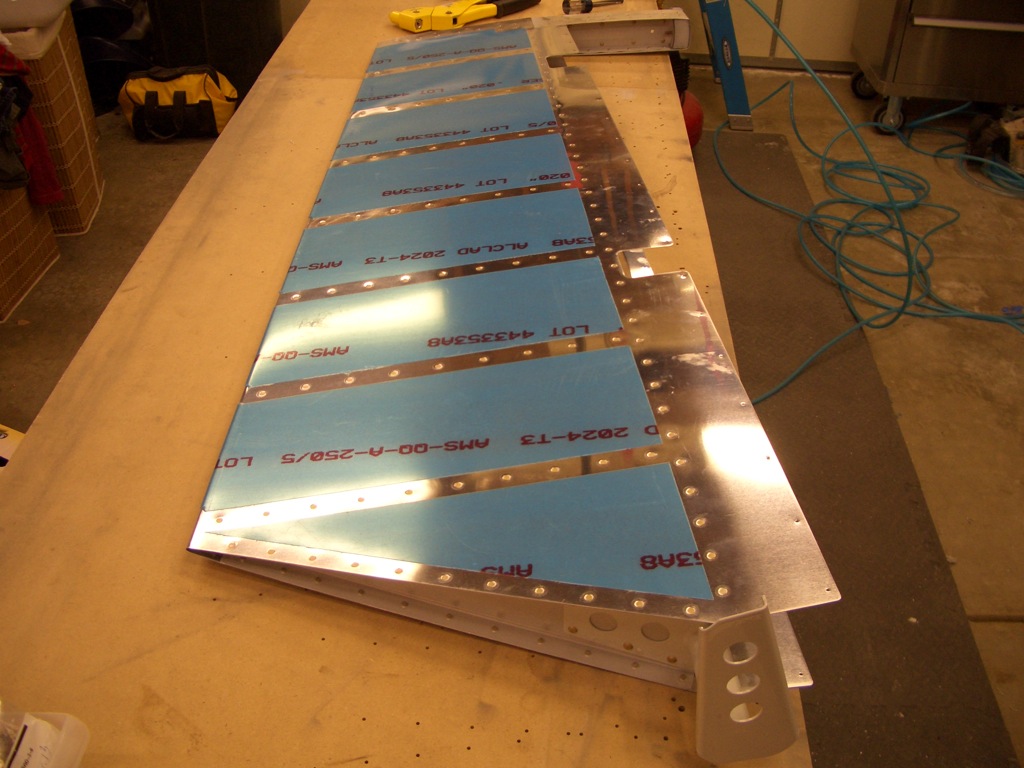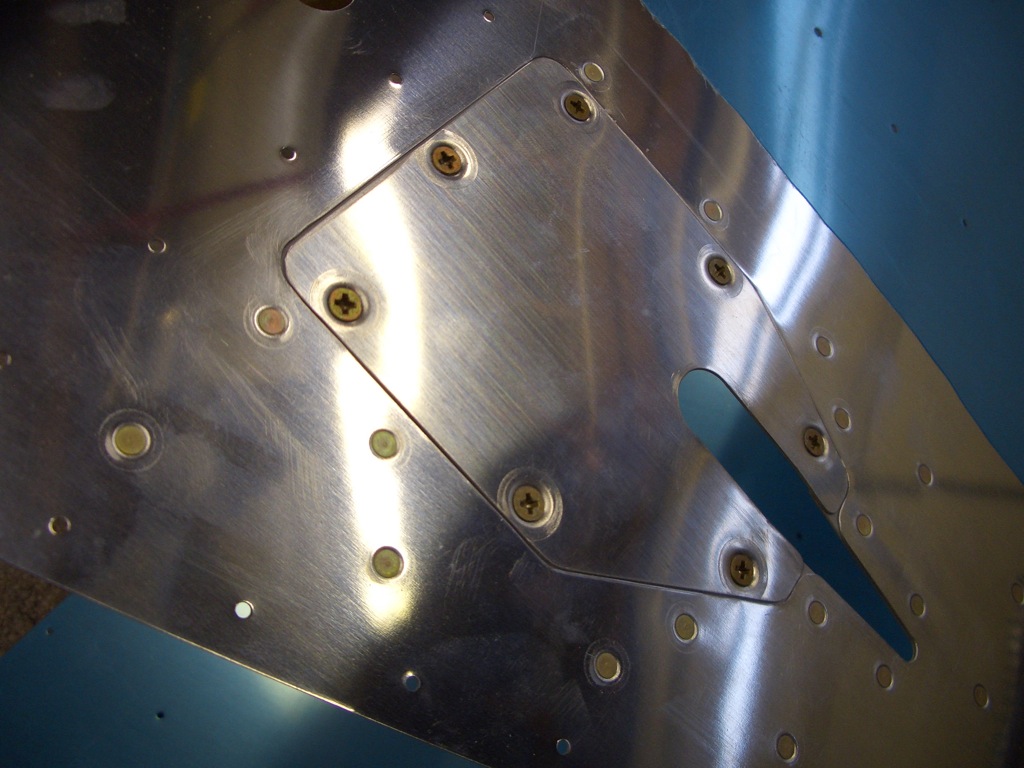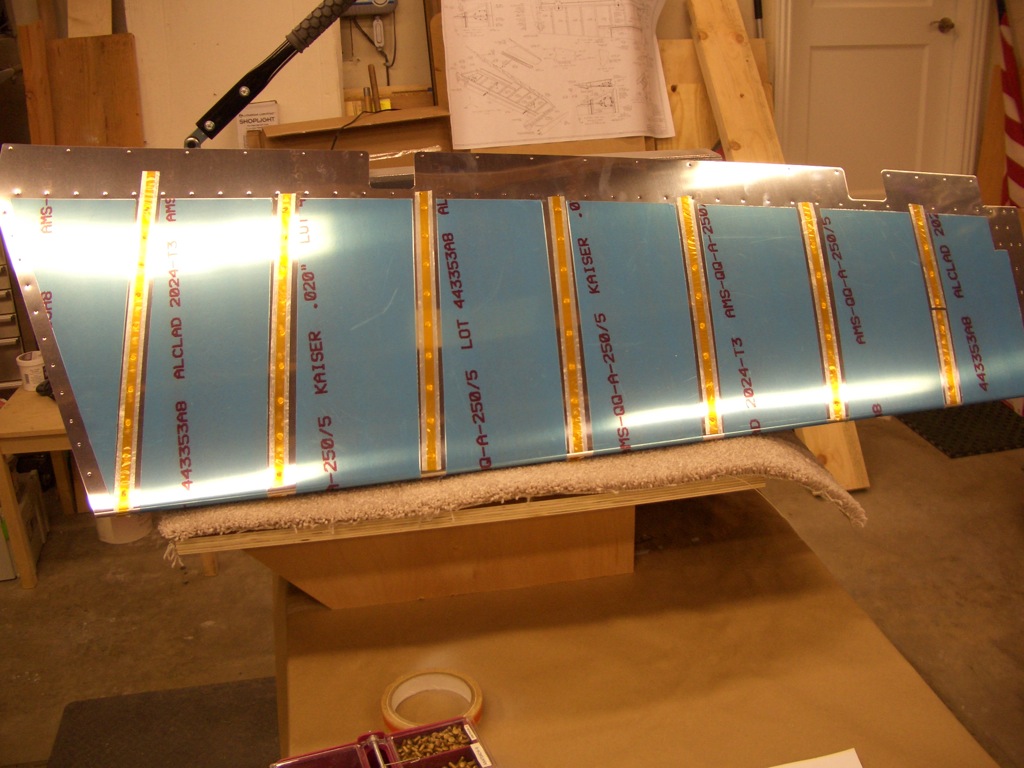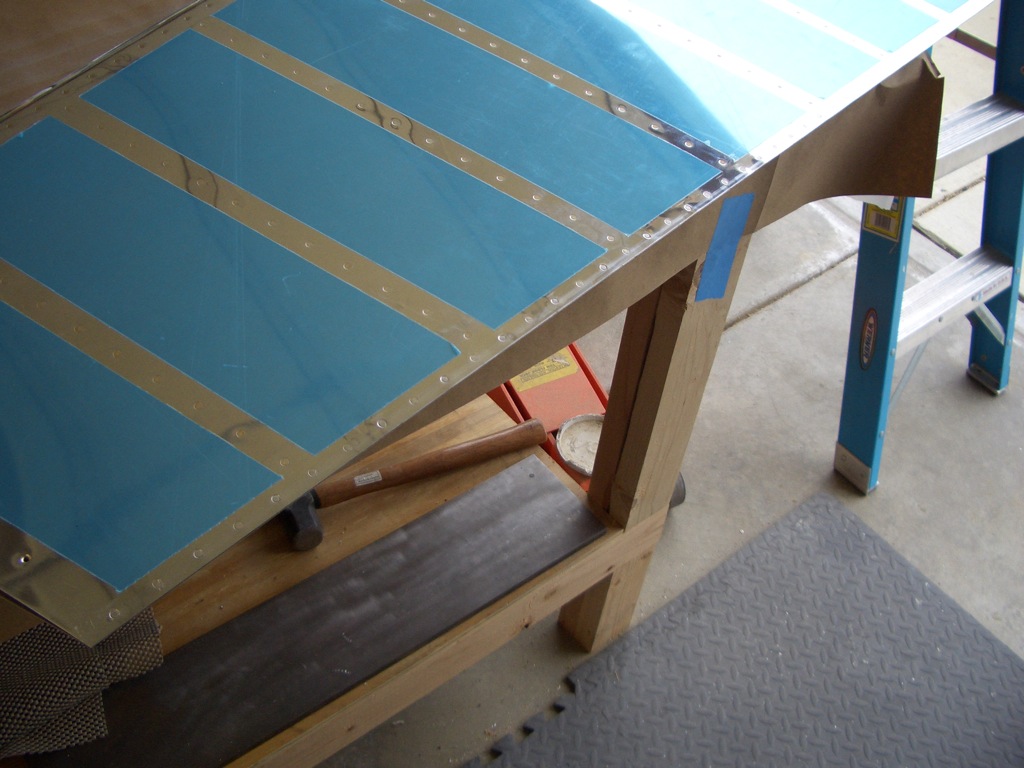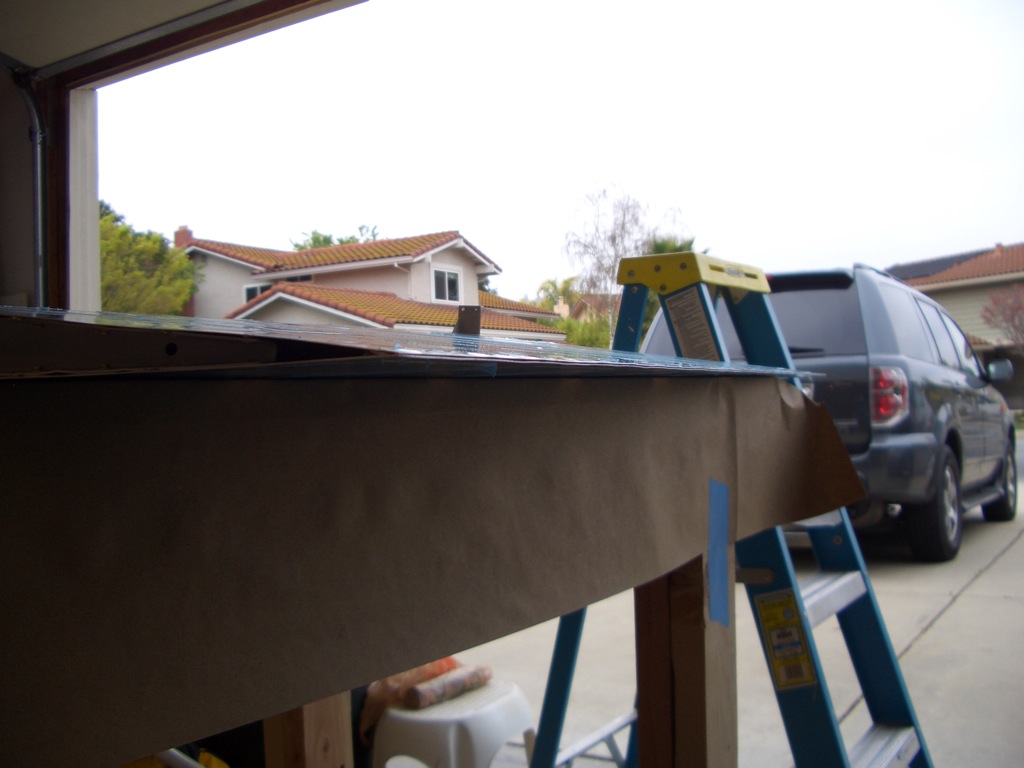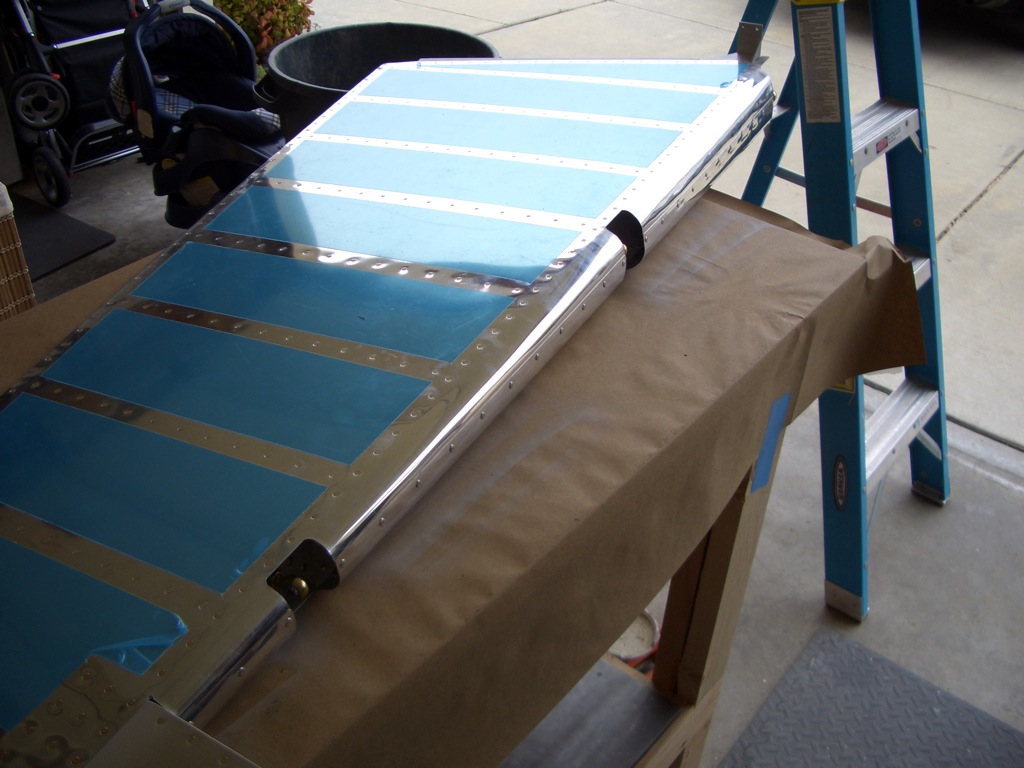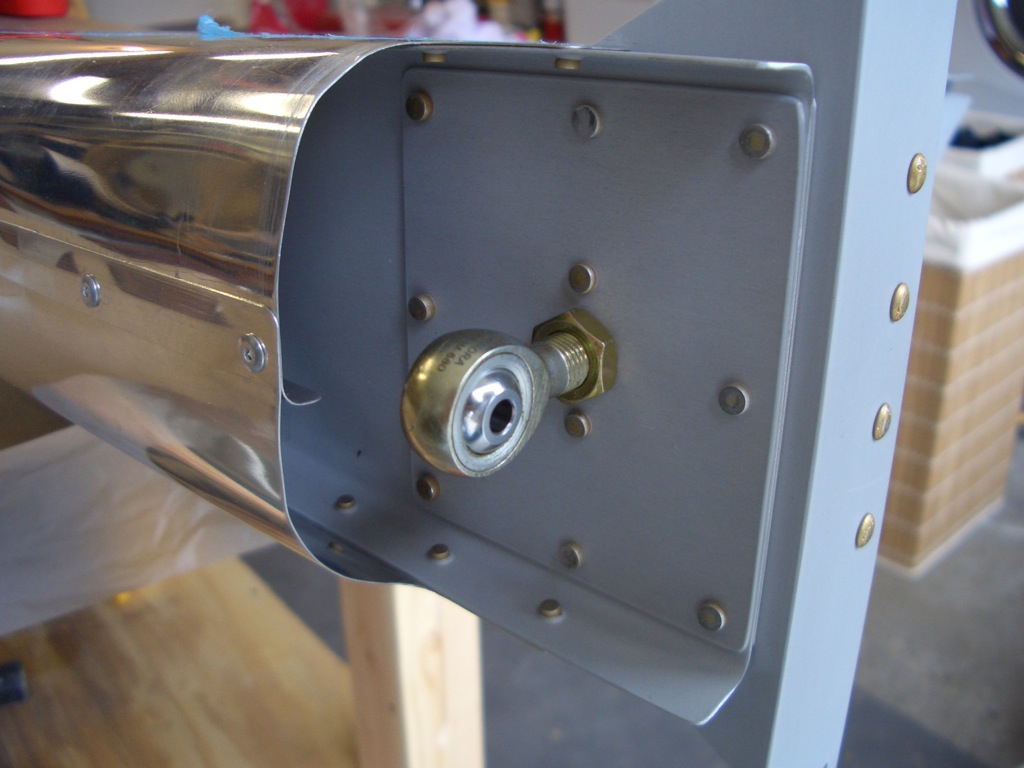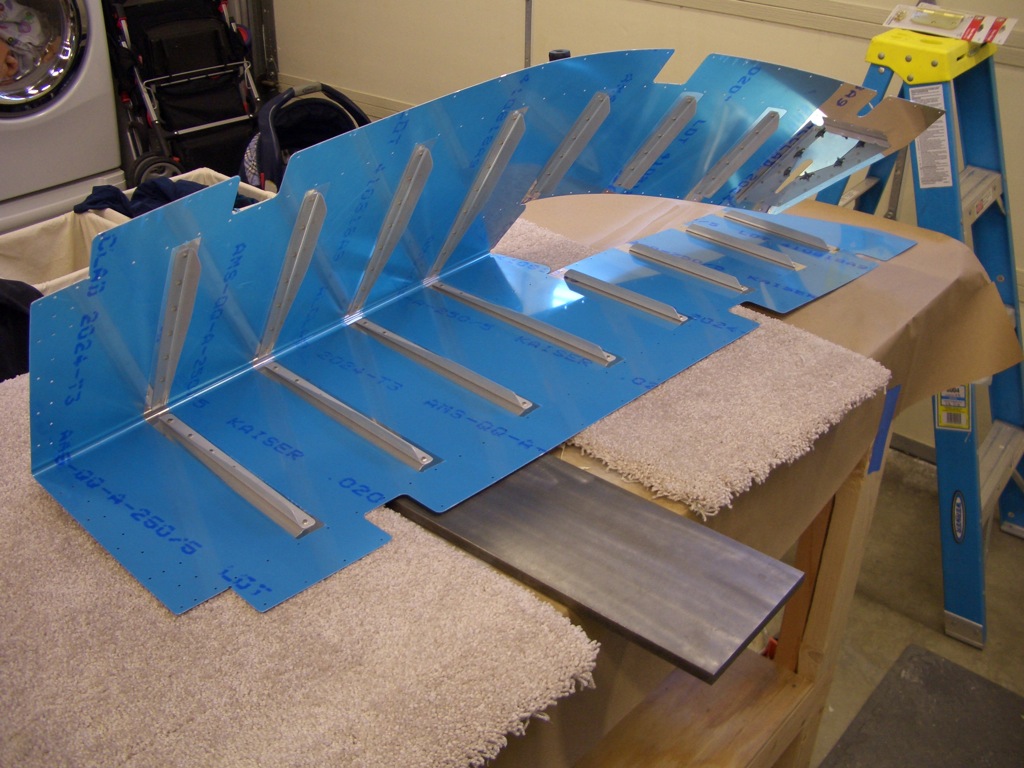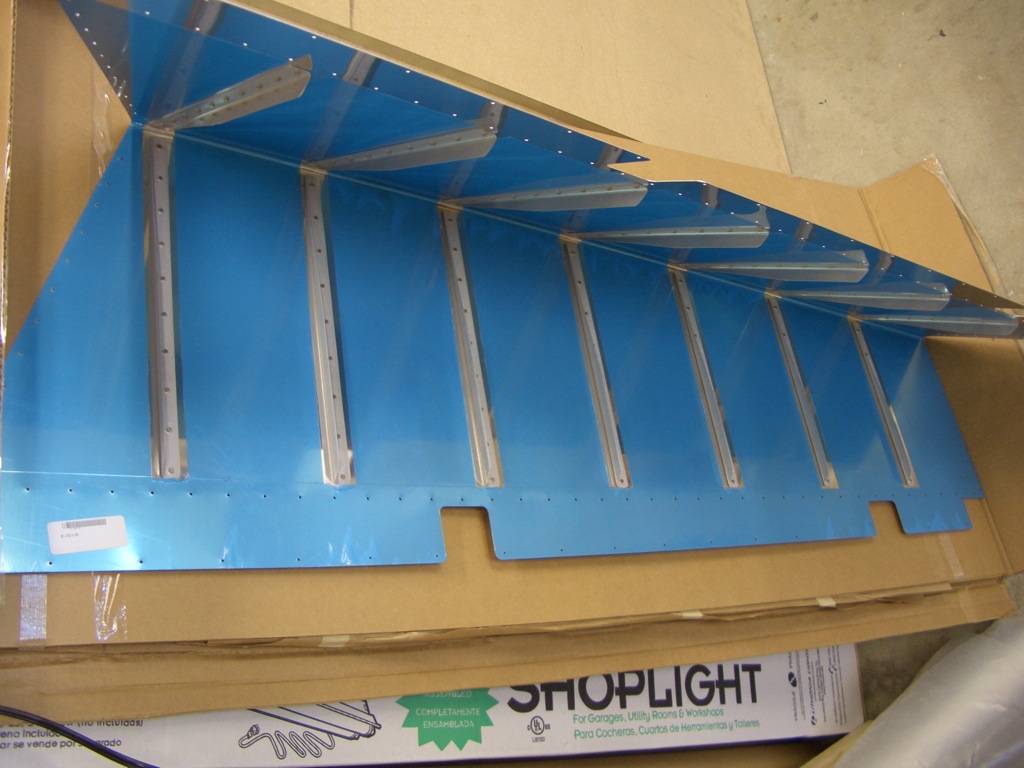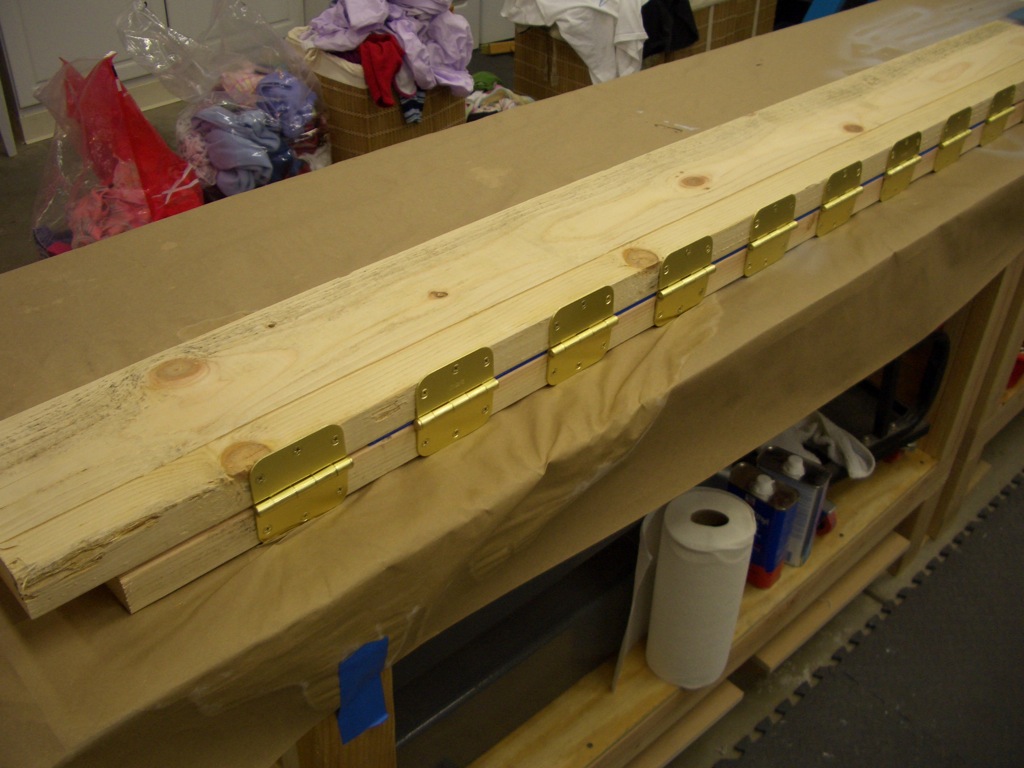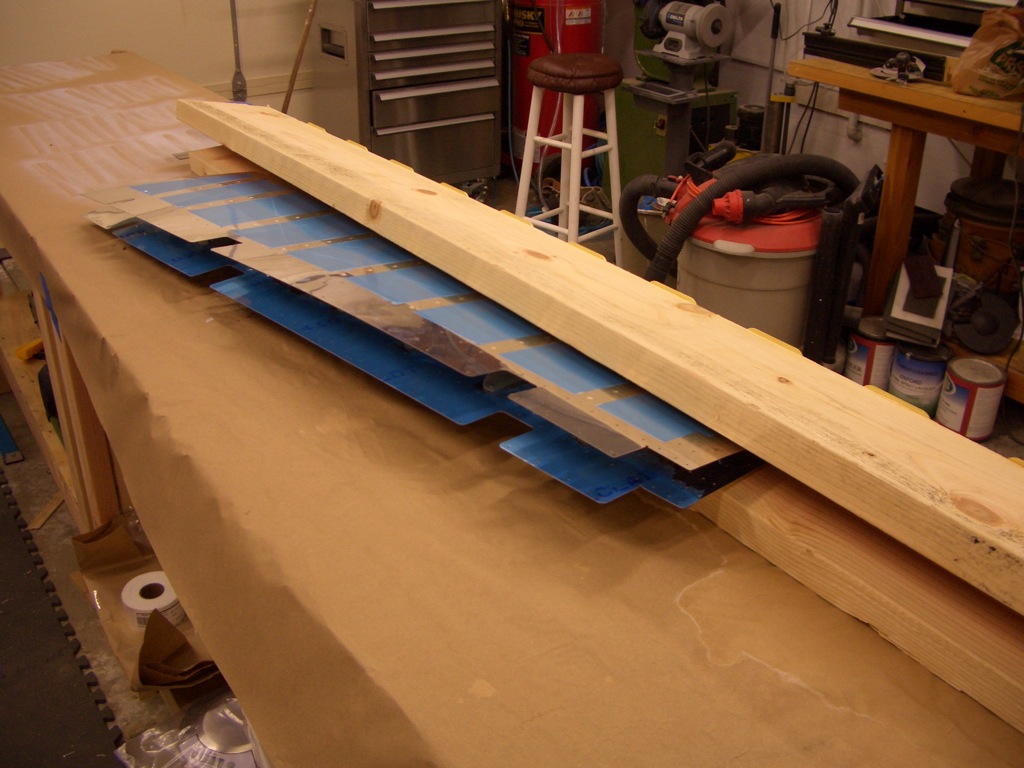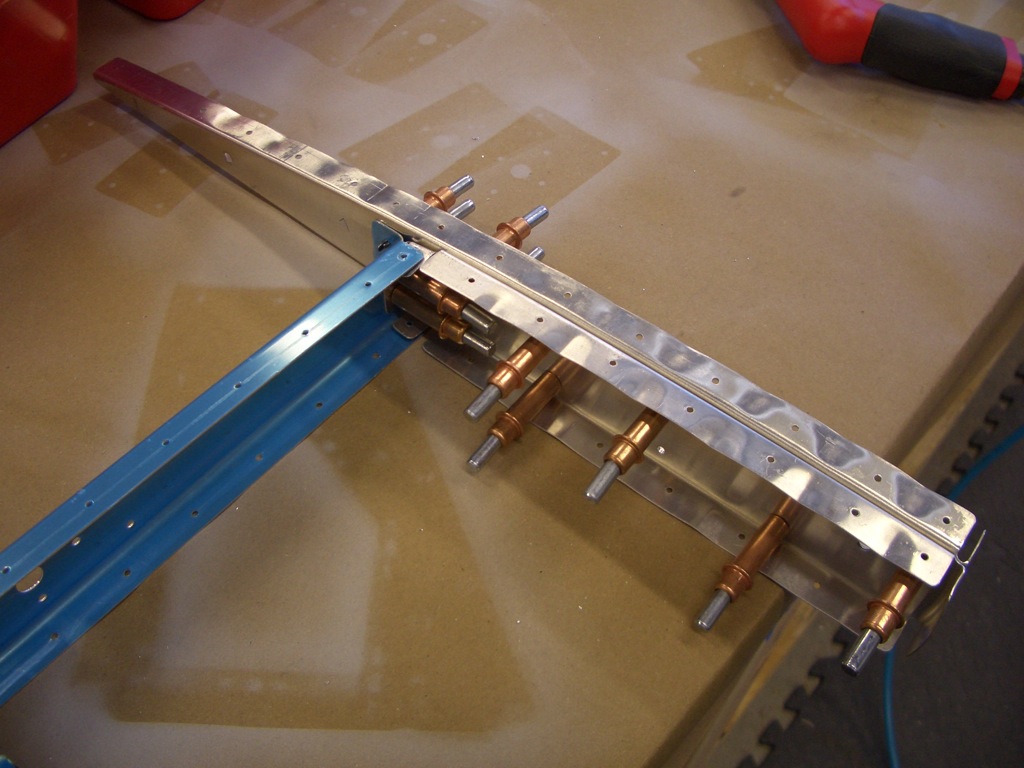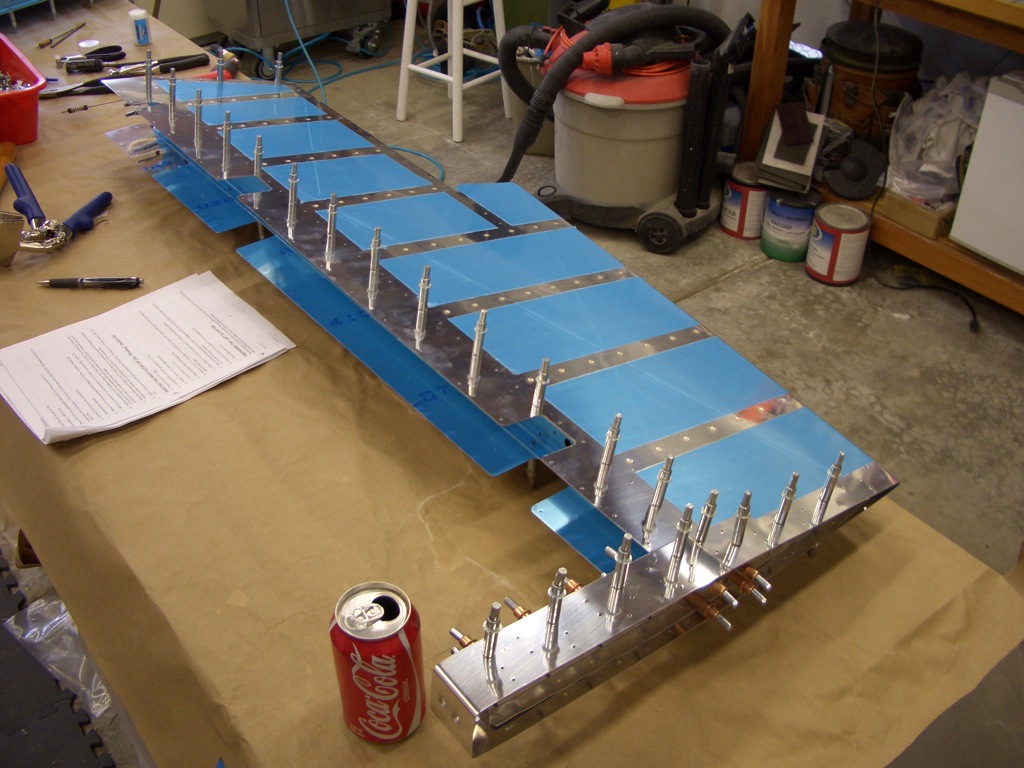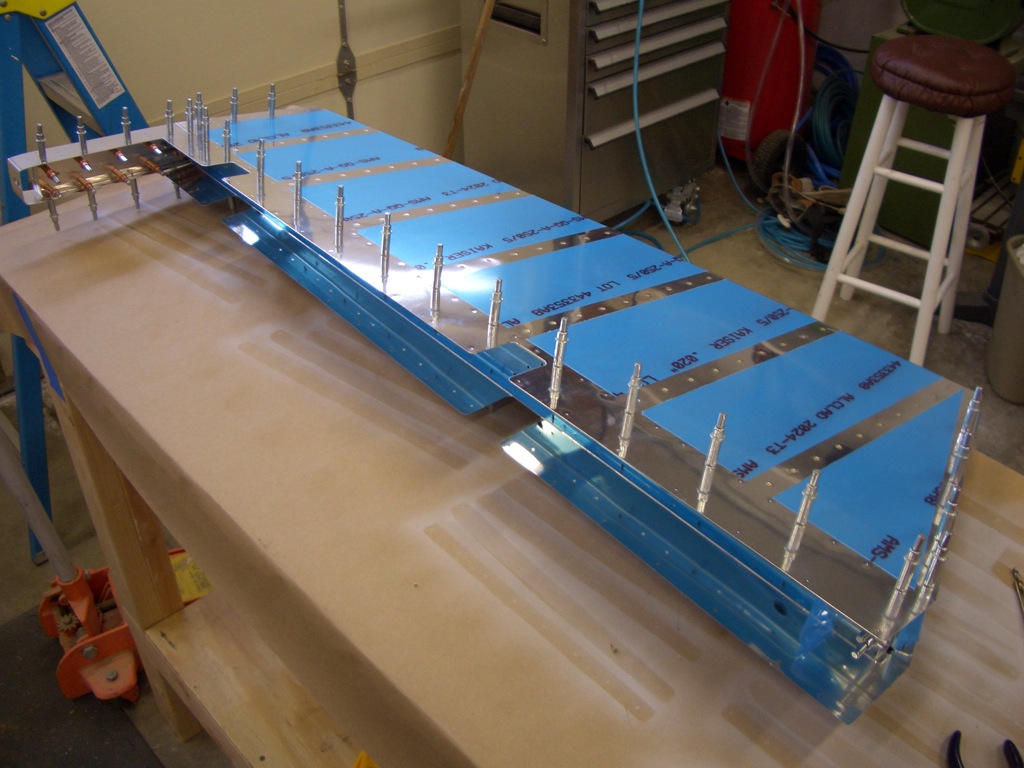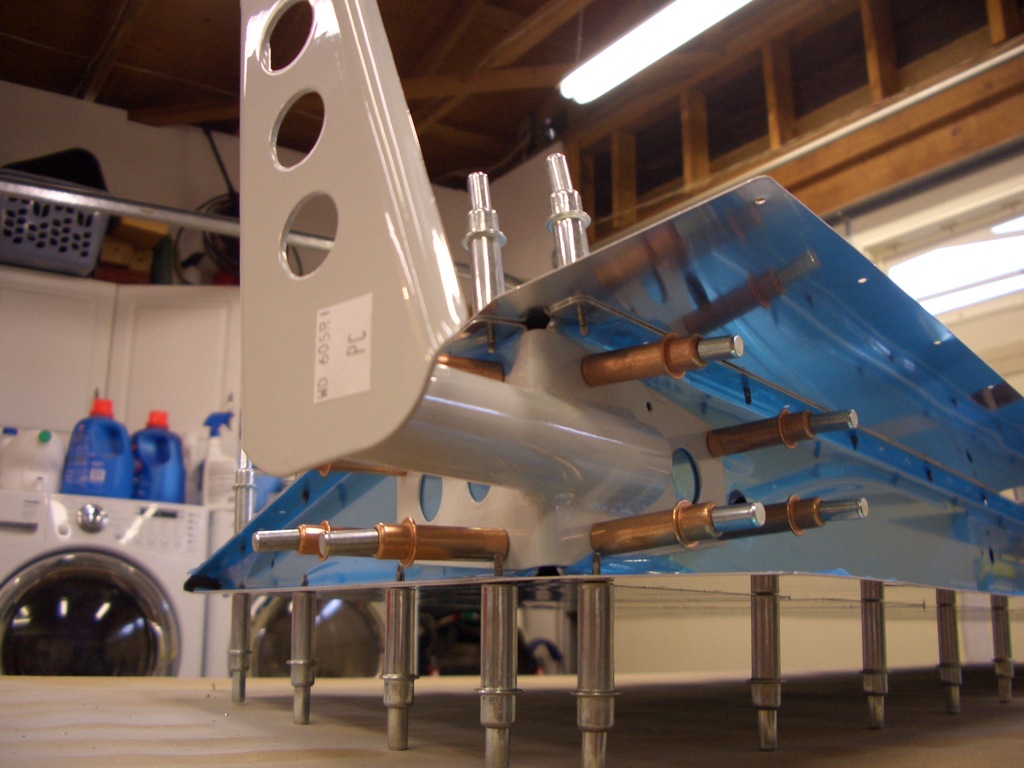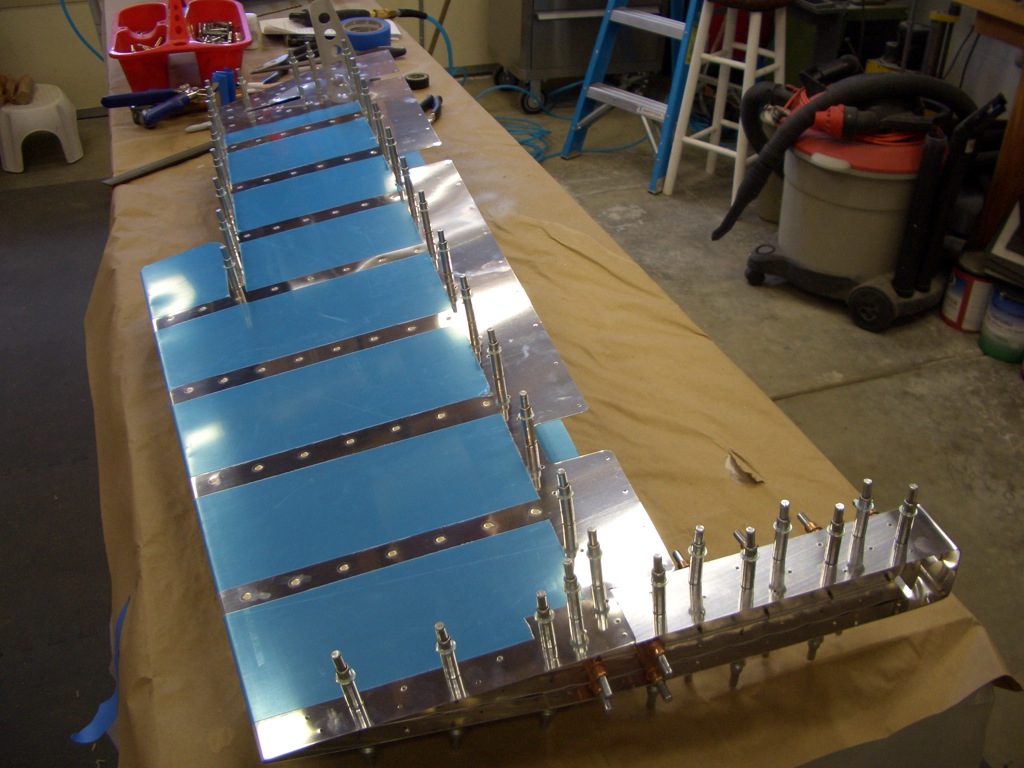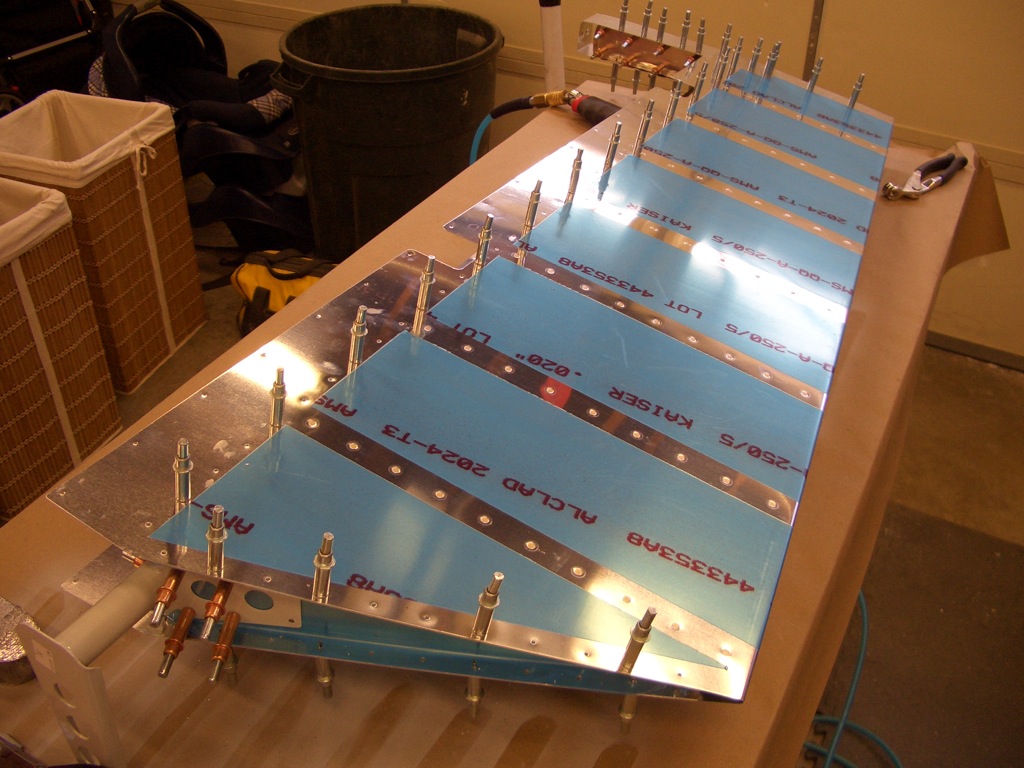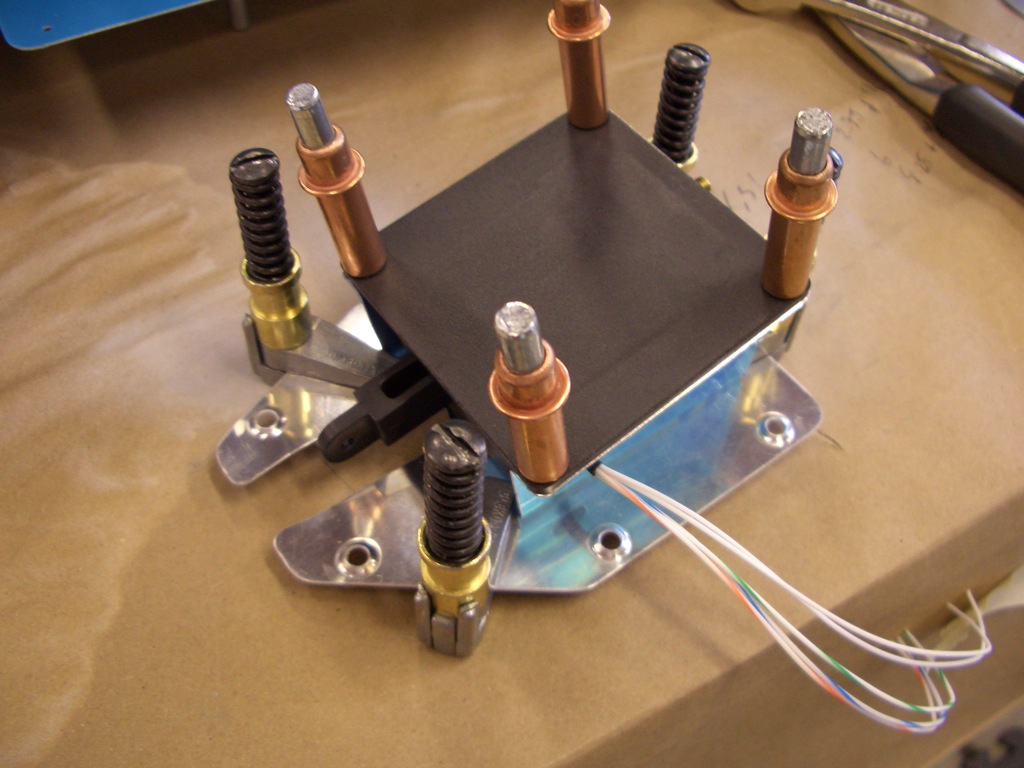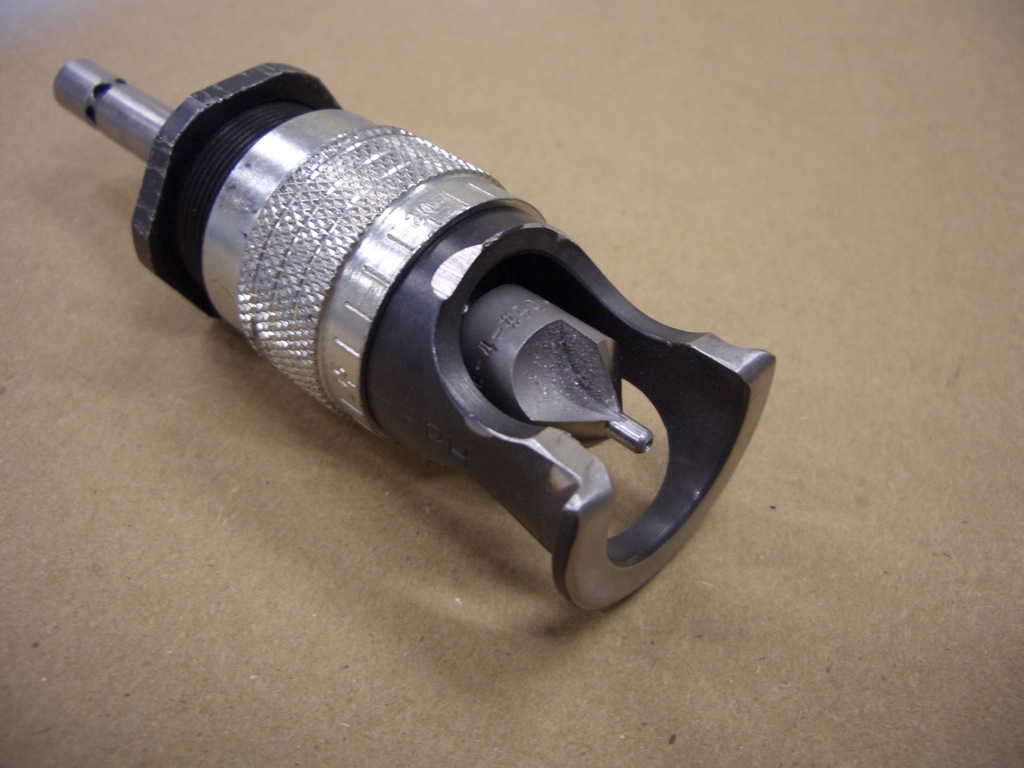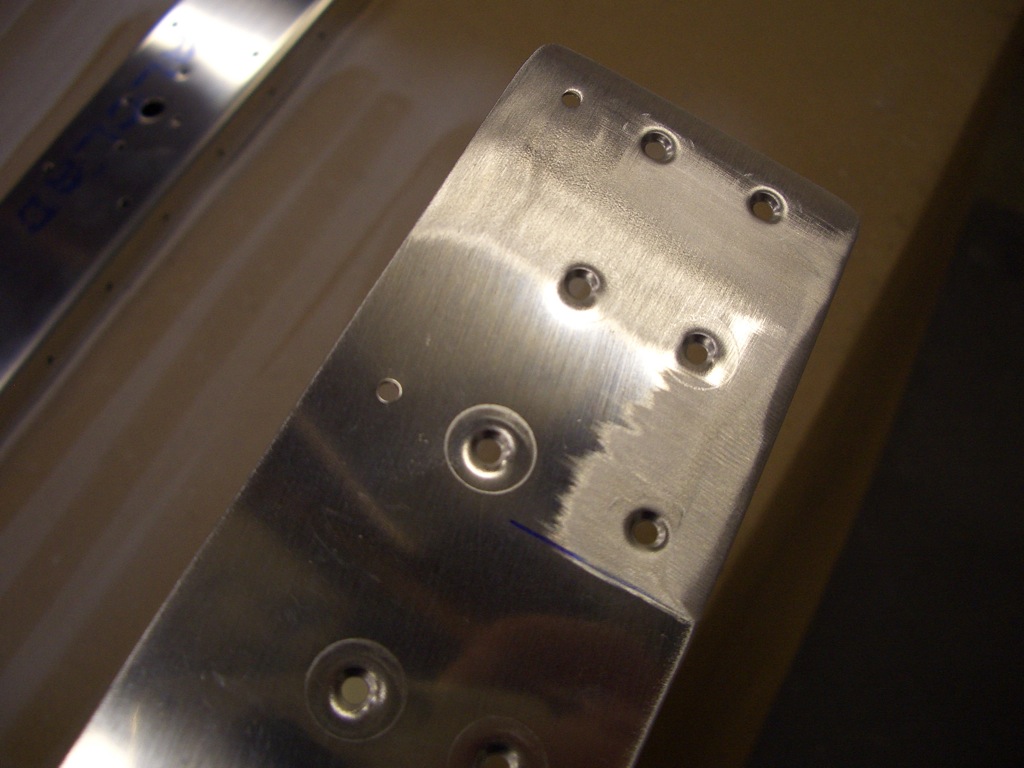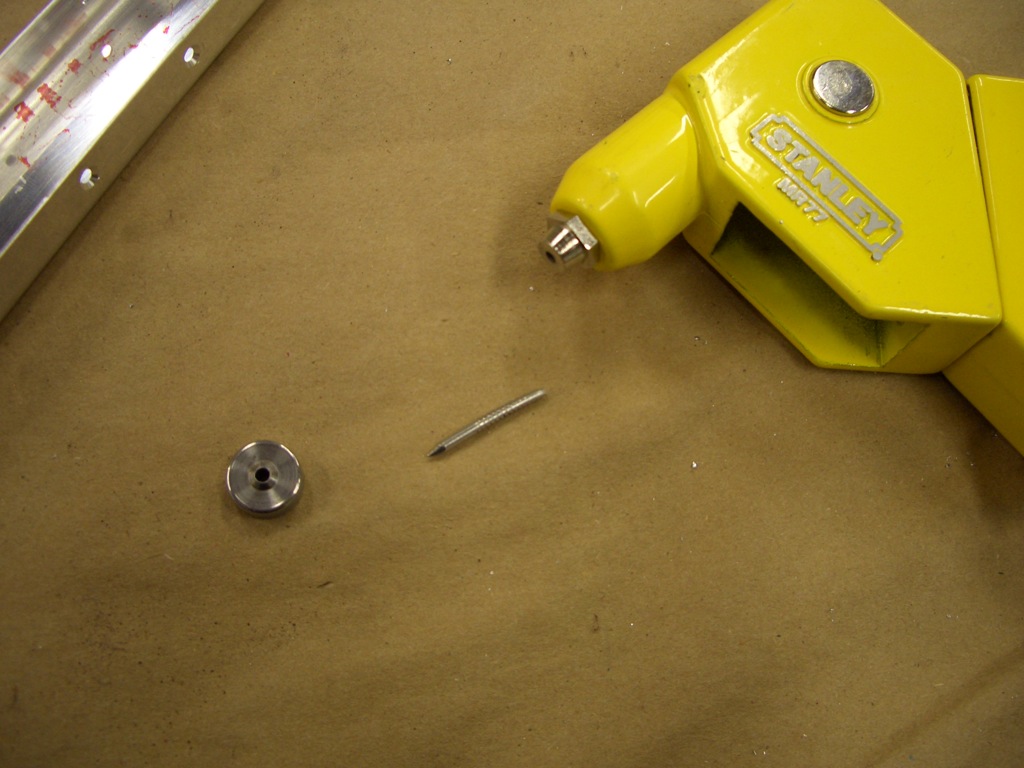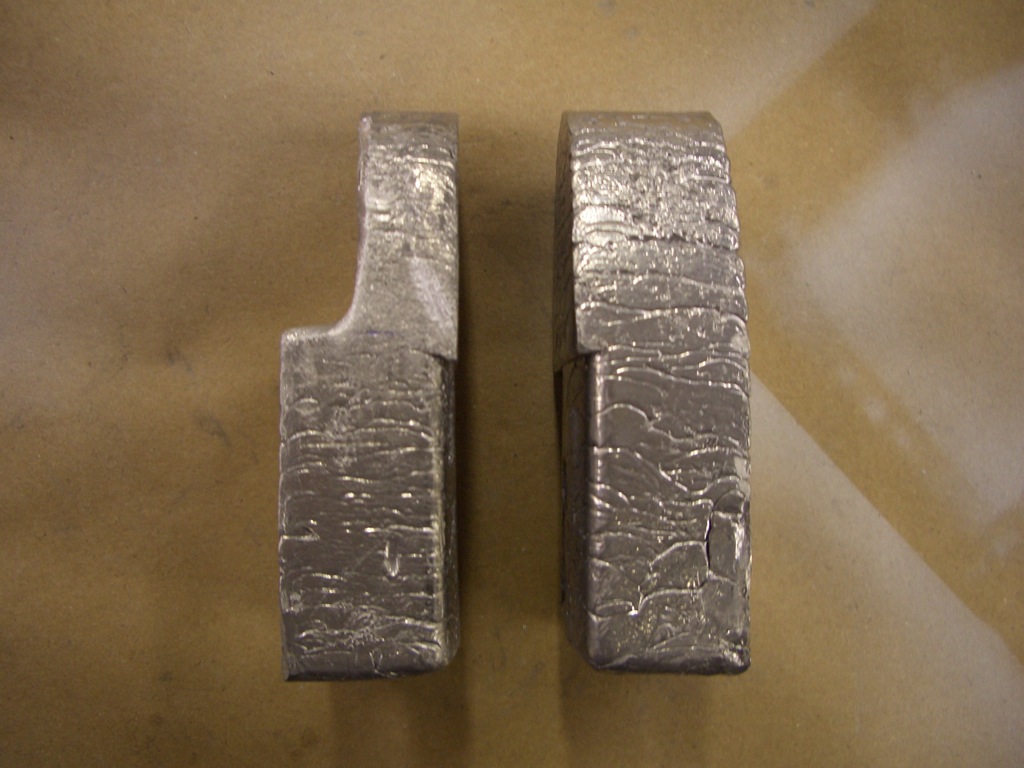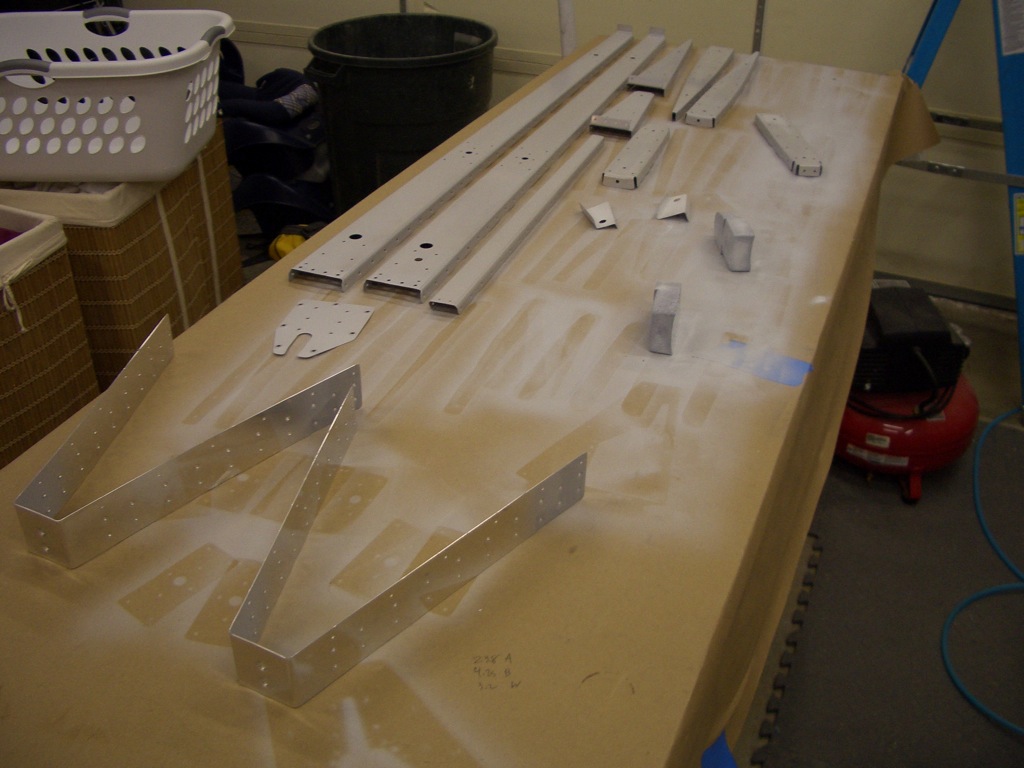I started by riveting the hinge reinforcement plates and platenuts to the elevator spars. I’m still working on both elevators to save time.
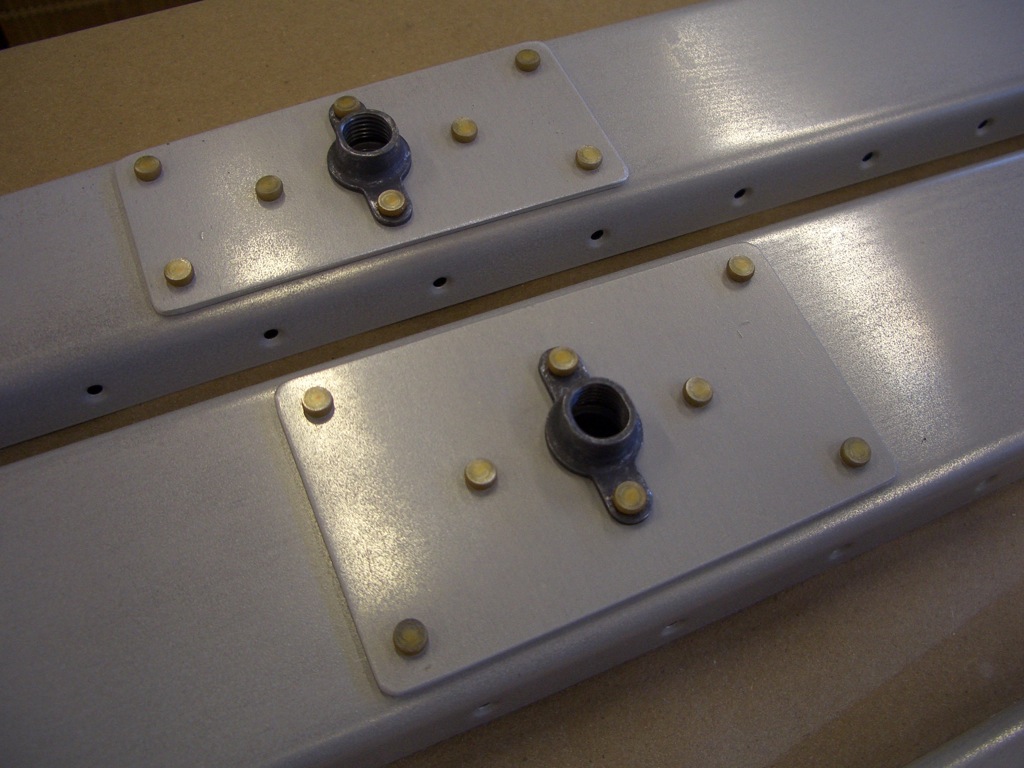
Here is the trim servo supports, back-riveted to the trim cover plate.
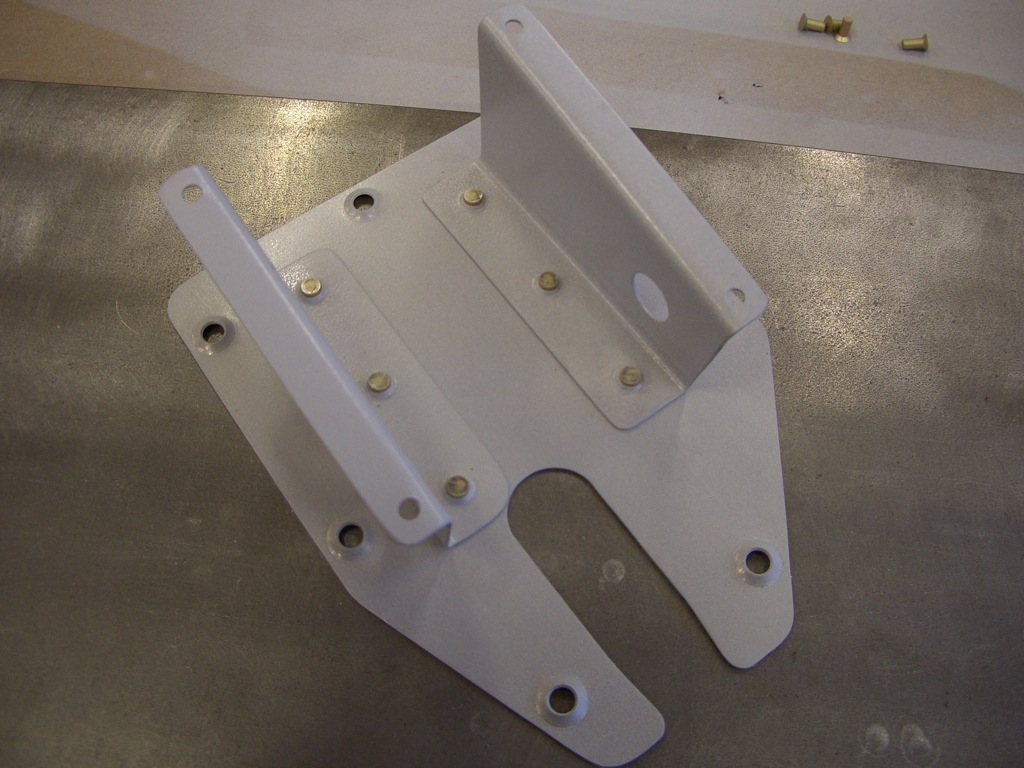
And here is the servo, mounted to the supports.
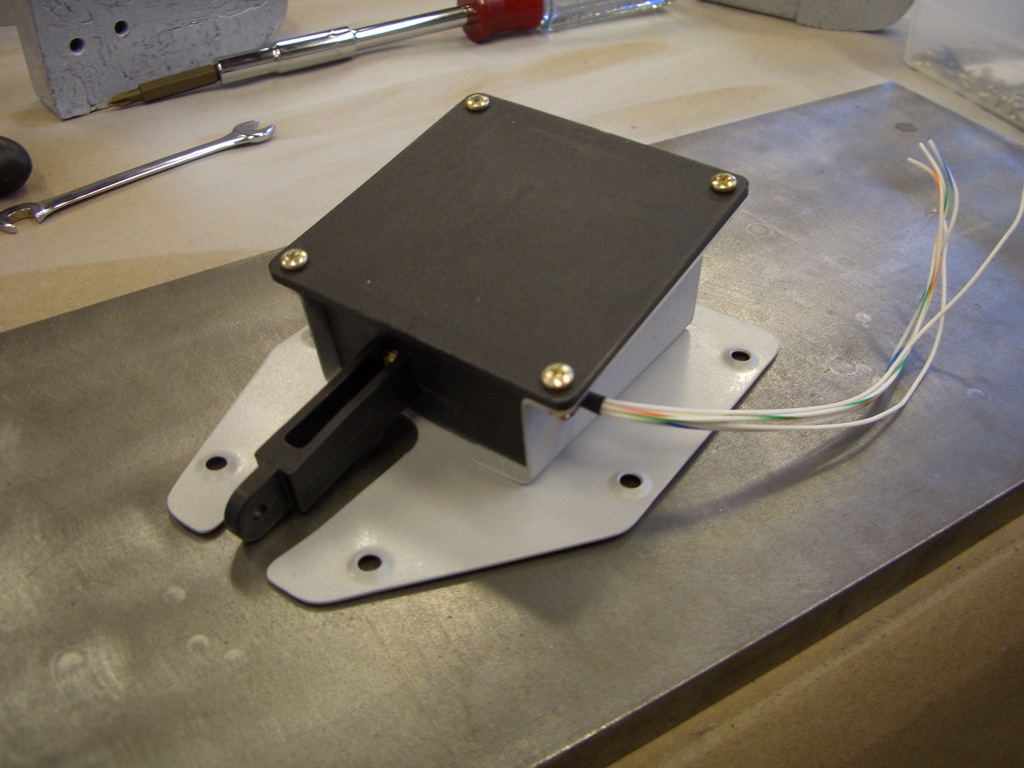
I riveted the root ribs onto the spars. This is the root rib for the left elevator. You can see it has a blunt end where the trim spar attaches.
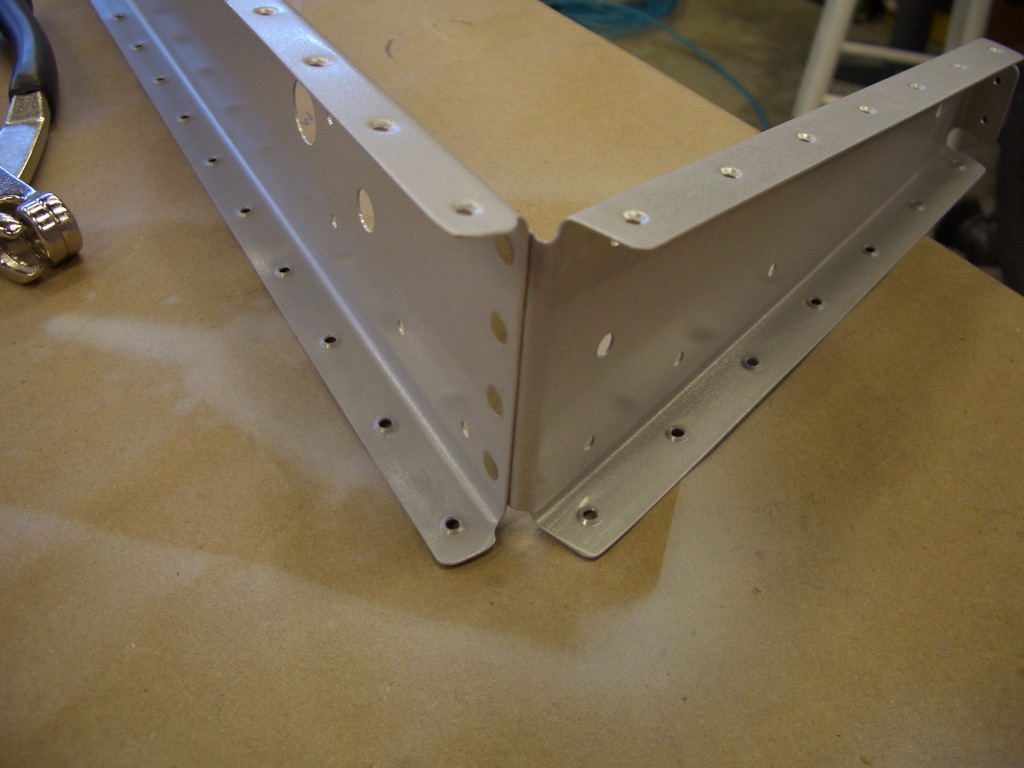
The instructions are definitely not in the best order here. They have you rivet E-703 (end rib) to E-704 (counterbalance rib) before riveting them both to the spar. The problem with that is that these rivets can’t be squeezed if you do that and must be shot/bucked (probably with a double offset set). Instead, I squeezed these now while they’re easy to reach.
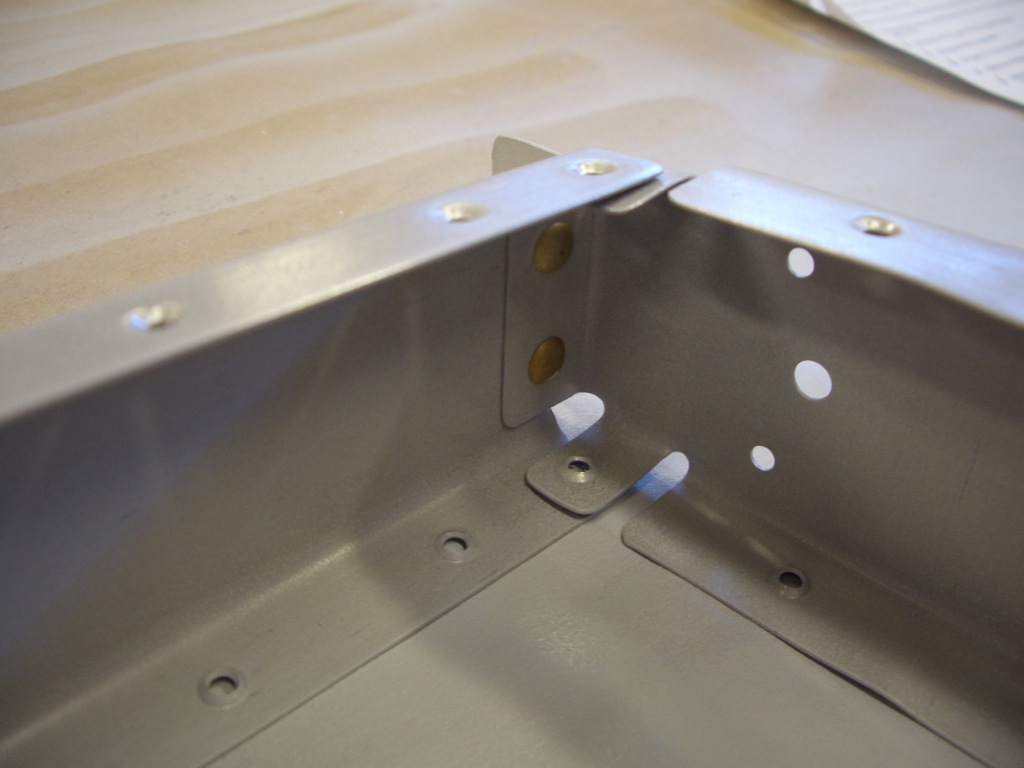
And then squeezed the rivets holding E-703 to E-704.
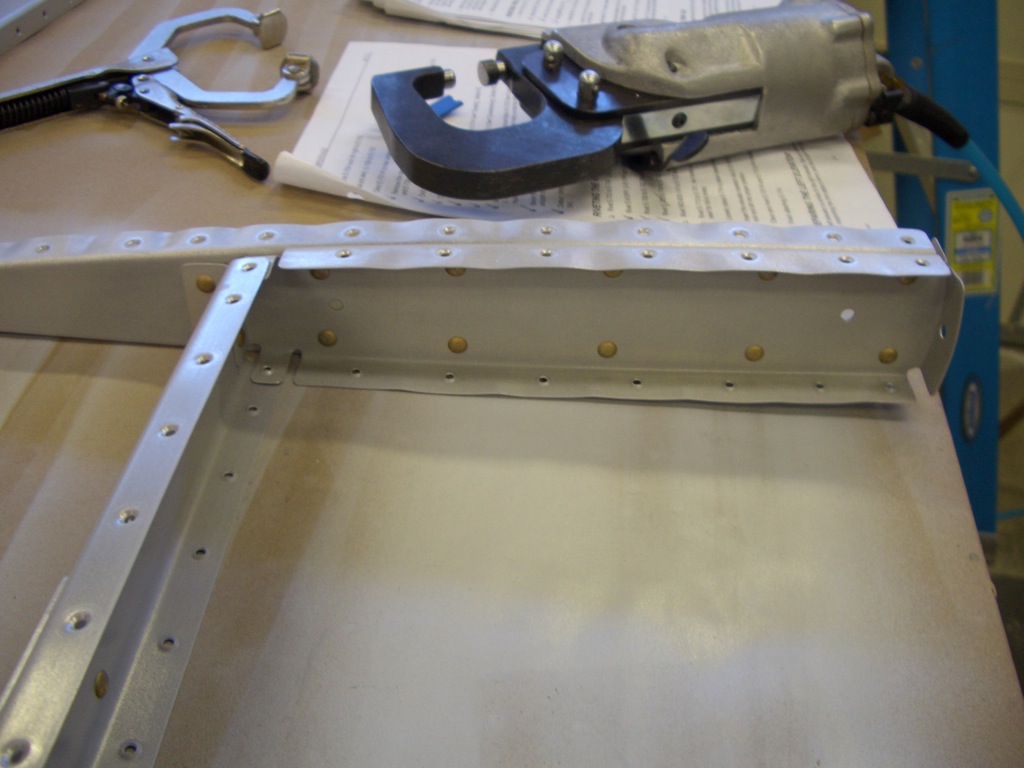
The elevator horns can now be riveted on.
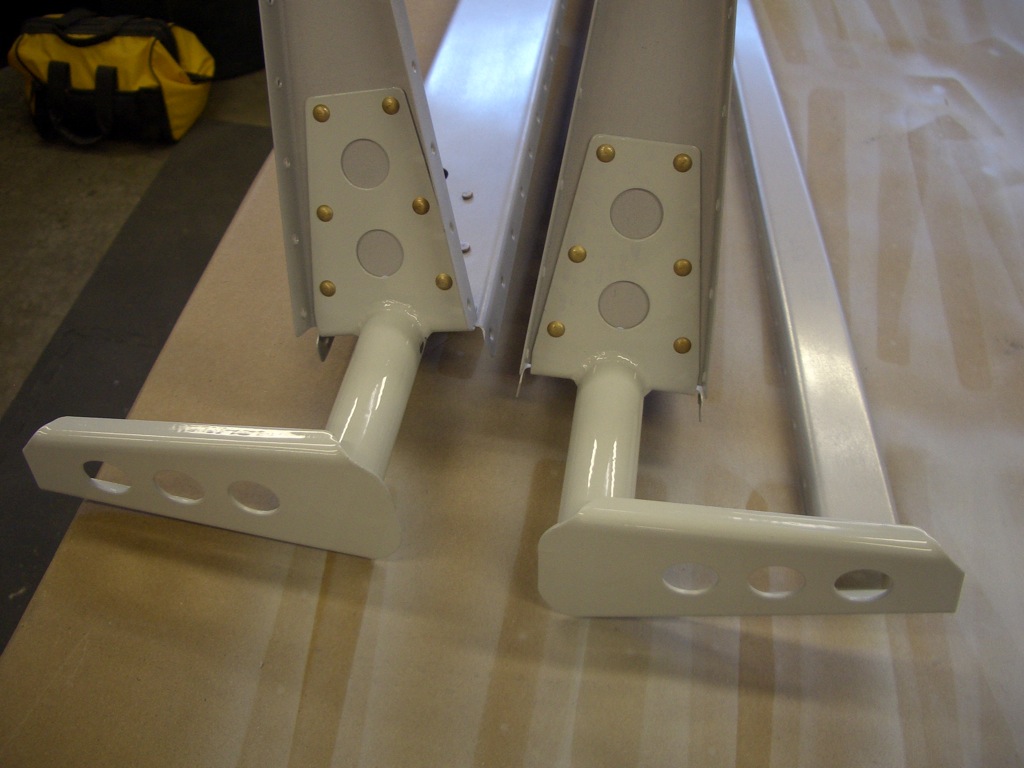
I added a dab of RTV to the back end of each stiffener pair to tie them together. This helps prevent cracking here according to Van’s.
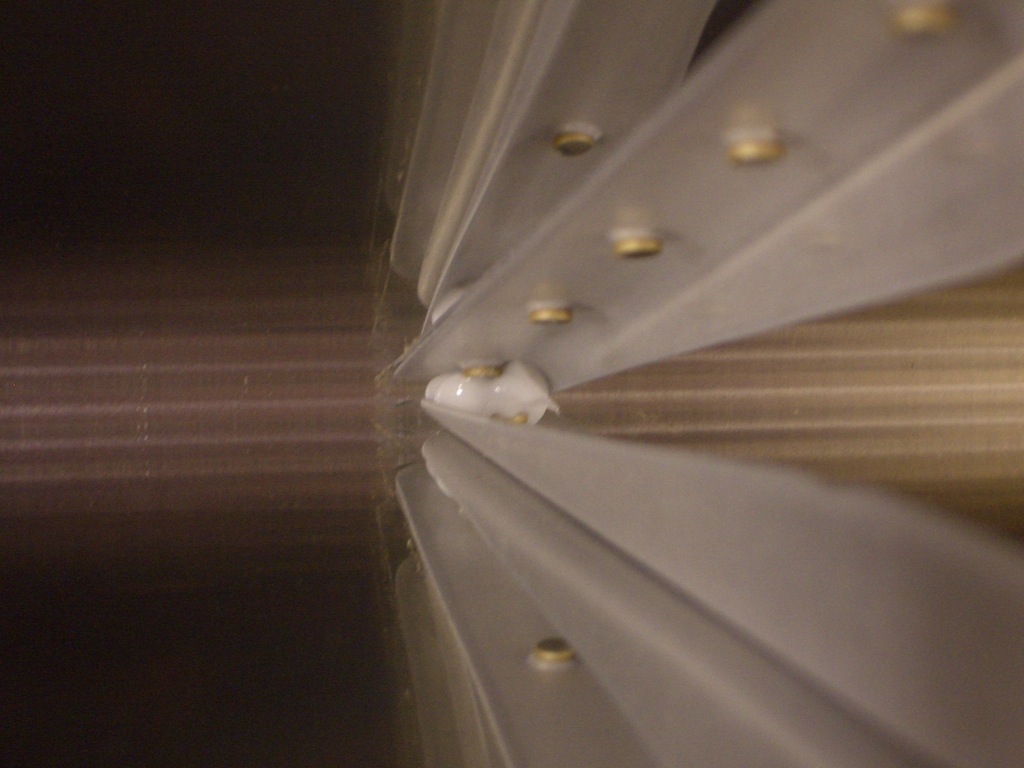
And the right elevator is complete except for the leading edge rolling.
